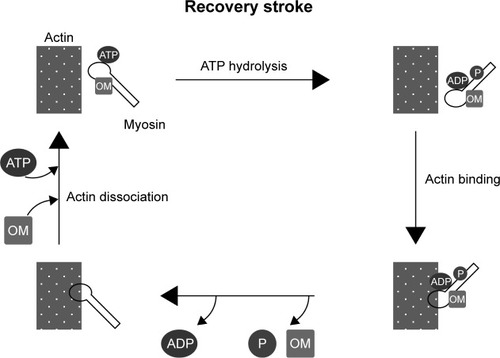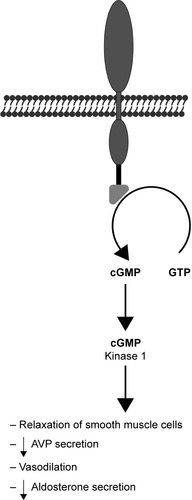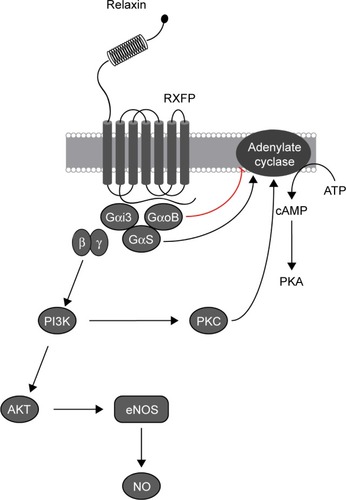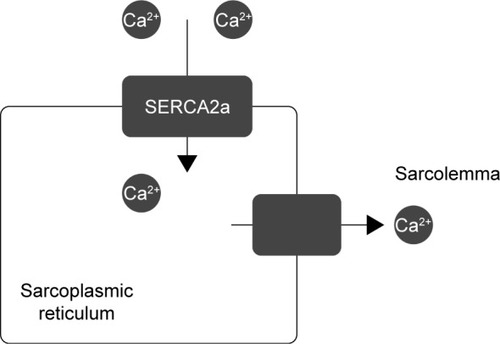Figures & data
Table 1 An overview of the presented novel therapeutic methods with respect to their mechanism of action and latest stage of clinical development
Figure 1 Mechanism of the impact of OM on muscle contraction.(/p)(/p)Notes: OM binds to myosin filaments and shifts the equilibrium of ATP hydrolysis toward the ADP-P state. OM increases the number of myosin filaments ready to bind actin filaments, in turn increasing the stroke power.(/p)(/p)Abbreviations: OM, omecamtiv mecarbil; ATP, adenosine triphosphate; ADP, adenosine diphosphate; P, inorganic phosphate.

Figure 2 Mechanism of action of urodilatin.(/p)(/p)Note: The consequences of NPR-A receptor activation include increased cGMP production, resulting in lowered intracellular calcium level which reduces the smooth muscle tonus.(/p)(/p)Abbreviations: AVP, arginine vasopressin; GTP, guanosine triphosphate; cGMP, cyclic guanosine monophosphate; NPR-A, natriuretic peptide receptor A.

Figure 3 Effect of relaxin binding with RXFP family receptor.(/p)(/p)Note: Mediated by G-proteins, the response involves activation of adenylate cyclase, increase in cAMP accumulation, as well as NO production.(/p)(/p)Abbreviations: RXFP, relaxin family peptide; ATP, adenosine triphosphate; cAMP, cyclic adenosine monophosphate; PKA, protein kinase A; Gαi3, Gαi subunit 3; GαoB, Gαo subunit B; GαS, Gα subunit S; β, Gβ subunit; γ, Gγ subunit; PI3K, Phosphatidylinositol-3 kinases; AKT, protein kinase B; PKC, protein kinase C; eNOS, endothelial nitric oxide synthase; NO, nitric oxide.

Figure 4 Mechanism of action of SERCA2a.(/p)(/p)Note: This ATPase pump transfers calcium ions from the sarcolemma to the sarcoplasmic reticulum.

Table 2 A summary of the latest clinical trials with respect to their outcomes and observed adverse effects
